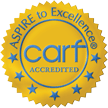What is Opioid Addiction?
Opioid use disorder (OUD) is a chronic brain disease impacting reward and pain systems. Opioids flood the brain with dopamine, creating euphoria.³ This leads to tolerance and dependence, with withdrawal symptoms when opioids are absent.⁴ Addiction is marked by compulsive drug seeking despite negative consequences, impacting physical and mental health, relationships, and quality of life.⁵ Tennessee and Virginia face high overdose rates fueled by fentanyl.⁶ Recognizing addiction signs, such as intense cravings, increased use, neglecting responsibilities, and experiencing withdrawal, is crucial.⁴ Seeking professional help is vital, with OTP and OBOT programs offering effective treatment.
Understanding Opioid Treatment Programs (OTPs)
Opioid Treatment Programs (OTPs) provide a structured and comprehensive approach to addressing opioid addiction. These programs go beyond simply dispensing medication; they combine medication-assisted treatment (MAT) with counseling, behavioral therapies, and other support services to help individuals achieve long-term recovery. 8
Types of OTPs
OTPs can vary in their structure and focus, but they commonly fall into these categories:
Choosing the Right Program: OTP vs OBOT
Both OTP and OBOT programs offer effective pathways to recovery from opioid abuse. However, they differ in their structure, approach, and the level of support they provide. Choosing the right program depends on individual needs, preferences, and circumstances.
| Feature | OTP | OBOT |
|---|---|---|
| Location | Specialized clinics | Primary care offices |
| Structure | Highly structured, frequent visits | More flexible, less frequent visits |
| Medications | Methadone, buprenorphine, naltrexone | Buprenorphine, naltrexone |
| Counseling | Individual and group therapy, support groups | Individual therapy, CBT, motivational interviewing |
| Monitoring | Daily or frequent monitoring | Less frequent monitoring |
| Regulations | Strict regulations and accreditation are required | Less stringent regulations |
| Benefits | Structured environment, comprehensive care, access to specialists | Reduced stigma, integrated care, accessibility, personalized plans |
| Drawbacks | Rigidity in scheduling, potential stigma | May lack intensity, potential for less frequent monitoring |
Factors to Consider When Choosing



“This place is wonderful. The staff have helped me so much. I highly recommend this facility to help end opioid addiction with compassion and trust.”
Why Choose Cedar Recovery for Opioid Addiction Treatment in Tennessee and Virginia
Cedar Recovery is a leading provider of compassionate, individualized opioid addiction treatment in Tennessee and Virginia. We offer comprehensive services, including medication-assisted treatment (MAT), individual and group therapy, family therapy, and aftercare planning. Our commitment to personalized care, comprehensive support, and a focus on long-term recovery sets us apart.
At Cedar Recovery, we understand that addiction is a complex disease, and we believe in treating each individual with dignity and respect. Our experienced team of clinicians will work with you to develop a customized treatment plan that addresses your unique needs and goals. We offer a supportive and encouraging environment where you can focus on healing and rebuilding your life.
Frequently Asked Questions
Begin Your Recovery Journey at Cedar Recovery
Navigating the path to recovery from opioid addiction can feel overwhelming, but you don’t have to do it alone. At Cedar Recovery, we offer comprehensive and compassionate opioid addiction treatment in Tennessee and Virginia. Our personalized approach, including OTP and OBOT programs, helps individuals find lasting freedom from addiction. Contact us today for a free consultation to take the first step towards a healthier future. Call us at +1 (800) 799-1450 or visit our website to learn more about how we can support your journey to recovery.





